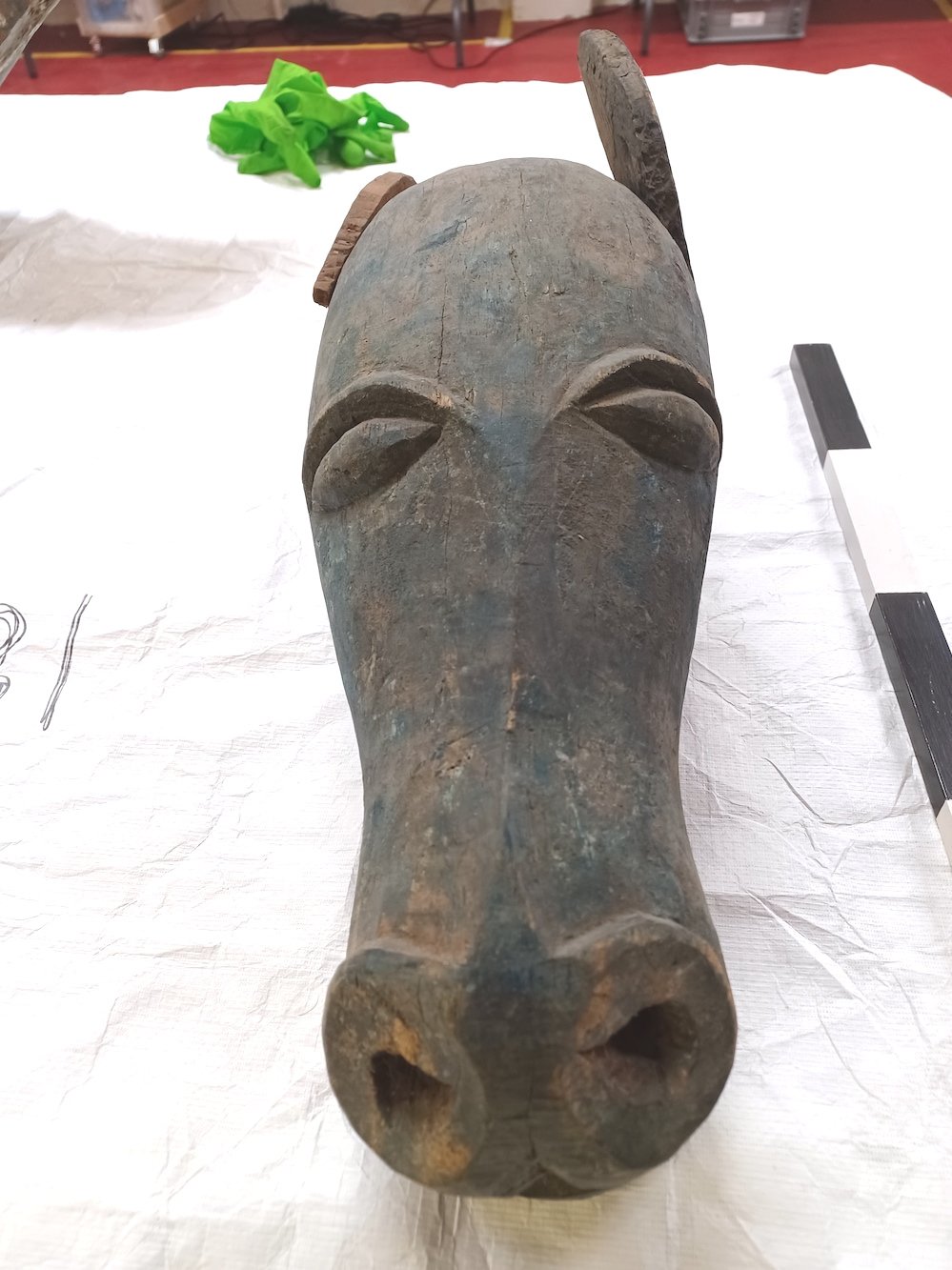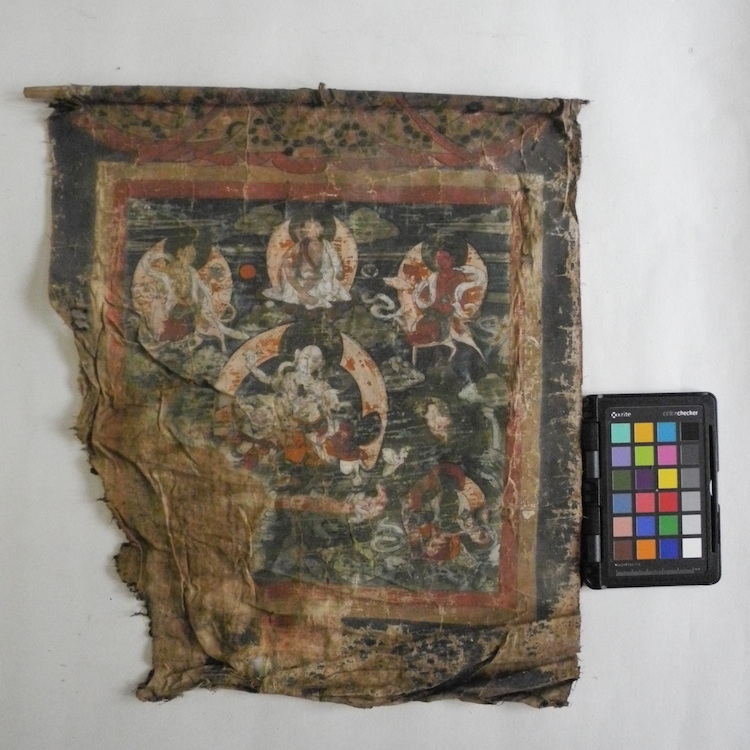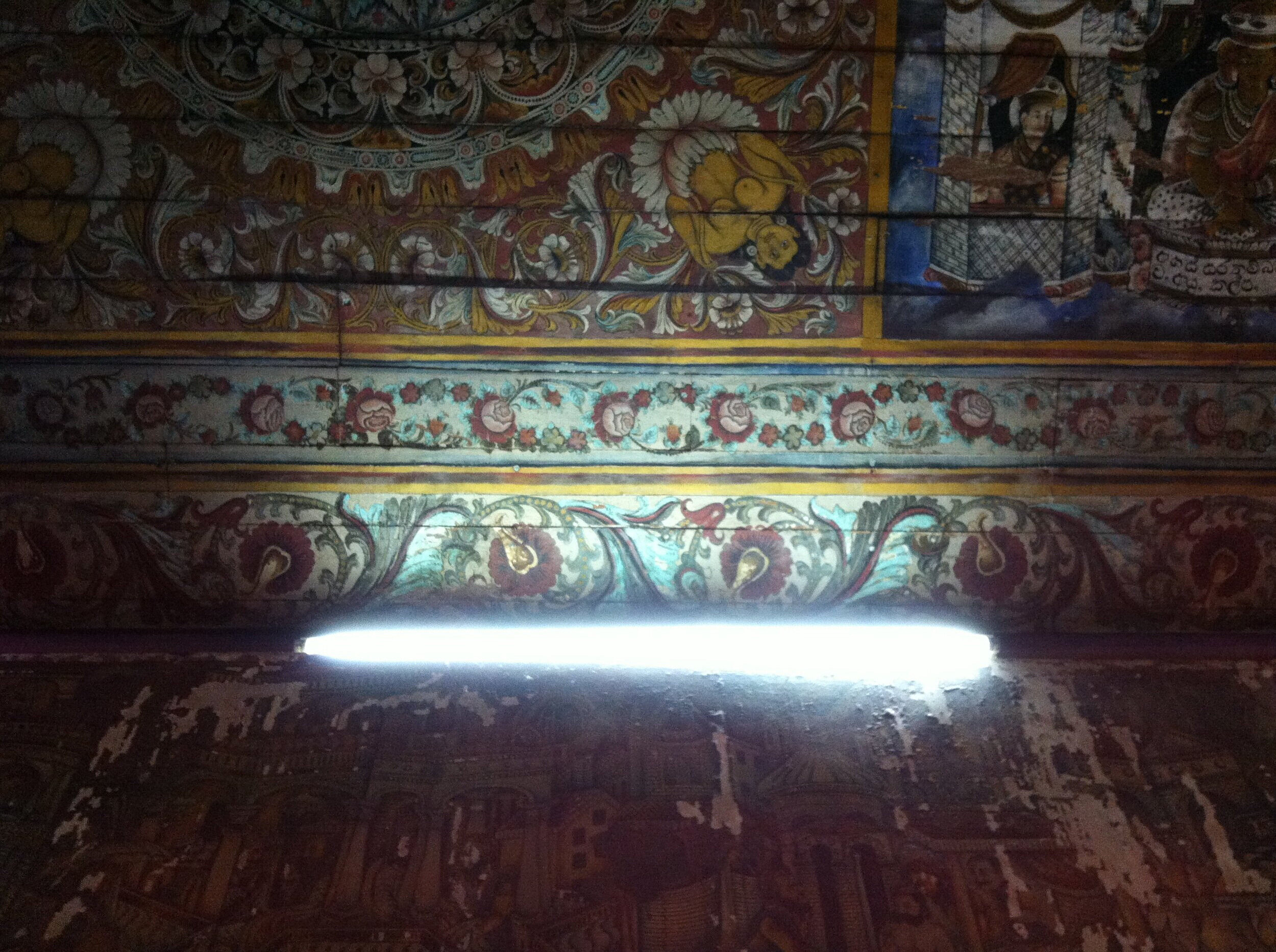CONSERVATION AND DISPLAY
I specialize in the care, handling and study of archaeological and ethnographic collections and I have worked with universtities, heritage authorities and museums as an objects conservator, mount-maker, display fabricator, technical historian and researcher.
I have substantial experience with material religion – especially Buddhism – and have worked with bone, textiles, ceramics, metals, wood, stone, decorated surfaces, painted scrolls, paper, ivory, leather and basketry.
I both teach and practice preventive care, risk management, safe handling for hazardous collections, and pesticide remediation with a focus on access, ethics and knowledge exchange.
My interest is finding collaborative, sustainable and minimally-invasive solutions for facilitating responsible, inclusive custodianship for all forms of material heritage.
Wooden horse from eastern India, MAA 2023
Checking light levels for the displays at the Museum of Archaeology and Anthropology in Cambridge, 2022
Before treatment, powdery paint and a fragile surface with evidence of historic use
After treatment with a solution of funori in water applied by dahlia sprayer
Mitigating Bynesian decay and glass disease on shells and beads on an object from north Africa and currently in the collection at MAA, 2021
Stabilizing a Tibetan beaded apron made from carved human bone by attaching it to a fabric support, object in the collection of the Fowler Museum at UCLA, 2013
Structural repair and visual reintegration of a Tang dynasty ceramic at the Shaanxi Provincial Institute for Archaeology in Xi’an, 2012
Fitting a custom mount in brass for the display of an American Civil War-era military sword at the Fowler Museum, Los Angeles, USA, 2016
Reinforcing a human skeleton in situ, Sudan, 2015
Fitting a custom mount at the Fowler Museum, 2016
As an artist, I also have 20+ years experience in fabrication, handling and installation.
FURTHER EXAMPLES
Using local materials and techniques to reinforce a damaged thang ka (scroll painting), Department of Culture, Thimphu Bhutan, 2013-14
Testing pastes made with locally available starches
Damaged thang ka, before treatment
Lining the thang ka with potato starch paste
Soap nut (Sapindus spp.) used locally as a detergent
Testing soap nut for washing the textile components of thang ka
Removing the previous treatment and re-assembling the Stele of Phimeanakas at the National Museum of Cambodia, Phnom Penh, 2013-14
Cleaning and condition reporting with the Department of Archaeology, Colombo, 2012
Evaluating the effects of electrical lighting recently installed in a painted temple interior
Before
After























